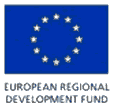
ISO 14006:2011
Guidelines for Implementing Eco design in Environmental Management Systems
17th October 2011UCA
Farnham
Surrey
FREE event organised by:



ISO 14006:2011 Guidelines for Implementing Eco design in Environmental Management Systems was published on the 8th July 2011 to support companies with integrating eco design into management systems
An increasing number of organizations are deciding to address eco design of their products. This is due to a range of driving trends such as market expectations, supply chain pressure and also legislation such as the Eco design for Energy related Products directive (ERP) 2009/25/EC. Organizations are also realizing that other benefits such as lower manufacturing costs and improved competitiveness can result from carrying out eco design of their product and services.
While many organizations already address the environmental impacts of their business processes through an environmental management system such as ISO 14001 or EMAS they do not always satisfactorily address the impacts of their products and services through this route. Unfortunately ISO 14001 is site process centric and places little emphasis on product development activities or business planning, offering no help in deciding what is to be done once significant product environmental aspects have been identified.
In order to carry out eco design in a systematic and managed way, organizations need to identify appropriate activities and then have the necessary levels of competence and management structures to effectively carry out and manage these activities. Primary eco design activities take place within an organizationís design and development area and it is here that the technical knowledge required in carrying out and managing eco design within the design function will reside. However when eco design is to be carried out under the umbrella of an environmental management system (EMS) such as ISO 14001, then the manager and operatives of the EMS must have an understanding of what these activities are and how they are to be managed and controlled. In this way the integrity of the EMS is not jeopardized and the environmental goals and objectives for the products can be achieved. ISO 14006 is needed because no other single standard including ISO 14001 covers and relates the differing areas of knowledge and competency required for eco design within an EMS.
Consultants from The Centre for Sustainable Design (CfSD) have worked worked in research, development and commercialisation capacities to reduce environmental impact multi-nationally in electronics, automotive, engineering, building, finance and marketing services industries.
These areas of knowledge and competency are:
The first two of these are likely to be situated within the design and development function but the third is clearly of major significance to the manager of the EMS and it is here where the guidance in ISO 14006 is primarily directed.
The workshop will be led by Martin Charter & Vic Clements who acted respectively as Global Chairman and UK Expert to ISO14006.
This training is intended primarily for managers and personnel involved with EMS based on ISO 14001and/or QMS based on ISO 9001 who are faced with the task of incorporating eco design of products and services within their management systems. However carrying out eco design impacts on all activities and functions within an organization, so it not sufficient just to train EMS/QMS personnel. Clearly designers and engineers tasked with carrying out the design process will benefit from this training as will personnel and managers in the other operational arms of the organization. In particular marketing and purchasing.
The workshop is FREE to companies or social enterprises that employ less than 250 employees that are based in Oxfordshire, Buckinghamshire, Hampshire, Isle of Wight, West Sussex, East Sussex, Kent, Berkshire or Surrey.
To book your place please email Ros on rcarruthers.t1@ucreative.ac.uk or complete and forward back the completed registration form below. Places are limited so book early.
Download booking form
Please download Map
Please the visit website www.suscin.org.uk
GreenThink 'green' innovation workshops may be of particular interest - see www.cfsd.org.uk/sids/greenthink
SUSCIN has been funded by South East England Development Agency (SEEDA) and European Regional Development Fund (ERDF) as part of the South East ERDF Competitiveness Programme 2007-2013.

